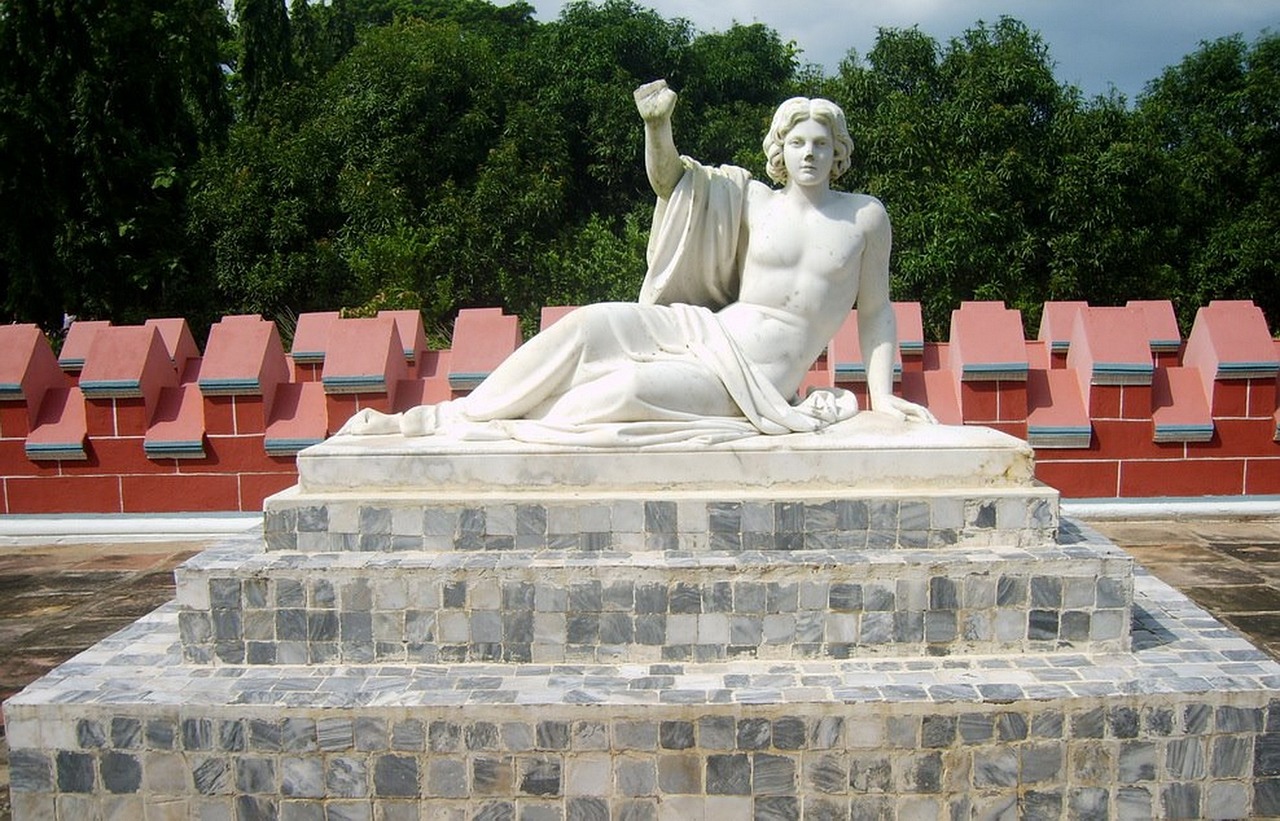This article delves into the pivotal historical events and influential figures that shaped Bengal’s freedom struggle, offering a detailed overview of its significant impact on India’s broader independence movement.
Bengal has always been at the forefront of India’s fight against British colonialism. The struggle for freedom in this region was not just about political liberation but also encompassed social, economic, and cultural dimensions that resonated deeply with the people. Understanding this context is essential to grasp the magnitude of Bengal’s contribution to India’s independence.
The Early Seeds of Rebellion
The roots of Bengal’s resistance can be traced back to early discontent with British rule. Factors such as economic exploitation, social injustice, and cultural suppression ignited a spirit of rebellion among the masses. This period saw the rise of various movements aimed at challenging the colonial status quo.
The Role of Key Figures
- Subhas Chandra Bose: A dynamic leader who advocated for complete independence and established the Indian National Army (INA) to combat British forces.
- Rabindranath Tagore: The first non-European Nobel laureate in Literature, whose poetry and songs fueled nationalist sentiments and inspired countless individuals to join the struggle.
The Impact of the Partition of Bengal
The partition of Bengal in 1905 served as a catalyst for increased nationalistic fervor. Although reversed in 1911, the partition intensified communal tensions and united Bengalis against colonial rule, showcasing their resilience and determination.
The Role of Women in the Freedom Struggle
Women played a crucial role in Bengal’s freedom struggle, challenging societal norms and actively participating in protests. Leaders like Begum Roquiah Sakhawat Hossain emerged, advocating for both women’s rights and independence.
The Influence of Literature and Arts
Art and literature were instrumental in mobilizing public sentiment. Patriotic songs and literary works fostered a sense of unity, while print media disseminated revolutionary ideas, galvanizing support for the freedom movement.
Conclusion: The Legacy of Bengal’s Freedom Struggle
Bengal’s freedom struggle left an enduring legacy in India’s quest for independence. The courage and commitment of its people not only challenged colonial rule but also inspired future generations to continue the fight for justice and equality.

The Early Seeds of Rebellion
Bengal’s freedom struggle can be traced back to the early resistance against British colonial rule, which was deeply rooted in the social and economic conditions of the time. The British East India Company’s exploitative policies significantly impacted the lives of the local populace, leading to widespread discontent and unrest.
Throughout the late 19th and early 20th centuries, various factors contributed to the growing sentiment of rebellion among the people of Bengal. The economic exploitation of agrarian communities, coupled with heavy taxation and land policies that favored British interests, created a sense of injustice. Many farmers were driven into poverty, which fueled anger and resentment against colonial rule.
Moreover, the social fabric of Bengal was also affected by British policies that aimed to divide and rule. The introduction of Western education and legal systems, while beneficial in some aspects, also created a class of educated Indians who became increasingly aware of their rights and the injustices they faced. This educated elite began to articulate their grievances, leading to the formation of various political organizations.
One significant event that marked the beginning of organized resistance was the Swadeshi Movement in 1905, which was a direct response to the partition of Bengal. This movement encouraged the boycott of British goods and the promotion of indigenous products, fostering a spirit of nationalism among the people. It was during this period that many young revolutionaries emerged, willing to fight for their rights and freedoms.
In conclusion, the early seeds of rebellion in Bengal were sown by a combination of economic hardship, social divisions, and a growing awareness of rights among the populace. These factors collectively ignited a flame of resistance that would grow into a significant movement for independence, shaping the course of India’s struggle against colonial rule.

The Role of Key Figures
In the landscape of Bengal’s freedom struggle, the contributions of key figures were instrumental in galvanizing the masses towards the cause of independence. Among these leaders, Subhas Chandra Bose and Rabindranath Tagore stand out for their profound impact on the movement.
Subhas Chandra Bose emerged as a dynamic leader who advocated for complete independence from British rule. His vision extended beyond mere political freedom; he aimed to awaken the spirit of nationalism among Indians. Bose’s formation of the Indian National Army (INA) was a significant milestone in the struggle. The INA sought to unite Indians across various backgrounds under a common banner of liberation, marking a pivotal shift in the strategies adopted against colonialism.
Furthermore, Bose’s efforts to forge international alliances, particularly with Axis powers during World War II, showcased his relentless commitment to India’s freedom. Despite the controversial nature of these alliances, they reflected his determination to seek support for India’s independence.
On the other hand, Rabindranath Tagore, the first non-European Nobel laureate in Literature, wielded his artistic talents to inspire a sense of patriotism and collective identity among the people. Through his poetry and songs, Tagore instilled a spirit of nationalism that resonated deeply with the masses. His works not only celebrated the beauty of Bengal but also called for unity and resistance against colonial oppression.
The cultural influence of Tagore complemented the political activism of leaders like Bose, creating a rich tapestry of resistance that mobilized countless individuals in Bengal. Together, these figures represented the dual forces of political action and cultural inspiration that were essential for the independence movement.
In conclusion, the roles of Subhas Chandra Bose and Rabindranath Tagore were vital in shaping the narrative of Bengal’s freedom struggle. Their combined efforts not only inspired the masses but also laid the groundwork for future generations to continue the fight for independence.
Subhas Chandra Bose’s Leadership
Subhas Chandra Bose stands out as one of the most influential leaders in India’s struggle for independence. His fervent advocacy for complete freedom from British rule marked a significant turning point in the fight for India’s sovereignty. Bose’s vision extended beyond mere political change; he aimed to inspire a sense of national pride and unity among Indians.
Born in 1897 in Cuttack, Odisha, Bose was initially influenced by the ideas of Mahatma Gandhi and the Indian National Congress. However, he quickly realized that the strategies of non-violent resistance were insufficient to achieve the urgent goal of independence. This realization propelled him to adopt a more radical approach, advocating for direct action and armed struggle against colonial powers.
In 1942, Bose took a monumental step by forming the Indian National Army (INA). This military force aimed to rally Indians, both within the country and abroad, to join the fight against British rule. The INA was unique as it sought to unite Indians across religious and regional lines, emphasizing a collective identity that transcended divisions. Bose’s leadership inspired thousands to enlist, showcasing his ability to mobilize and galvanize support.
Furthermore, Bose sought international alliances to strengthen India’s position. He famously traveled to Germany and Japan during World War II, seeking assistance in the fight against British colonialism. Although his methods were controversial, they underscored his unwavering commitment to achieving independence by any means necessary.
In conclusion, was characterized by his relentless pursuit of freedom and his ability to inspire a sense of unity among Indians. His legacy continues to resonate today, reminding us of the sacrifices made in the quest for independence and the importance of strong leadership in times of struggle.
Formation of the Indian National Army
The Indian National Army (INA), established by Subhas Chandra Bose in 1942, represented a monumental shift in the Indian struggle for independence. Unlike previous movements that primarily relied on non-violent resistance, the INA sought to engage in armed conflict against British colonial rule. Bose envisioned a united front of Indians, transcending regional and communal divisions, to fight for a common goal: the liberation of India from colonial oppression.
The formation of the INA was not merely a military initiative; it was a call to arms that resonated with the aspirations of millions of Indians. Bose’s leadership inspired many to join the ranks of the INA, which comprised not only Indian soldiers but also individuals from various backgrounds who shared a common desire for freedom. The army was initially formed with the help of Japanese forces during World War II, highlighting Bose’s strategic alliances with foreign powers to bolster India’s fight for independence.
One of the key aspects of the INA was its emphasis on nationalism and unity. Bose believed that only through collective effort could India achieve true freedom. The INA’s motto, “Give me blood, and I shall give you freedom,” encapsulated this spirit of sacrifice and commitment to the cause. The army organized various campaigns and faced numerous challenges, including limited resources and the formidable British military.
Despite facing significant setbacks, the INA’s efforts ignited a sense of pride and determination among Indians. The trials and tribulations faced by its soldiers became a symbol of resistance, inspiring future generations to continue the struggle for independence. The legacy of the INA and Bose’s vision for a united India remains a pivotal chapter in the history of the Indian freedom movement, illustrating the profound impact of armed resistance in the broader context of India’s quest for self-determination.
In conclusion, the formation of the Indian National Army marked a crucial turning point in the fight against British colonialism. It not only demonstrated the willingness of Indians to take up arms for their freedom but also laid the groundwork for a more unified national identity, ultimately contributing to India’s independence in 1947.
Bose’s International Alliances
During the tumultuous period of World War II, Subhas Chandra Bose emerged as a controversial yet significant figure in India’s struggle for independence. His quest for international support led him to forge alliances with the Axis powers, a decision that was both strategic and contentious.
Bose believed that to achieve India’s independence, it was essential to seek assistance from global powers, even if that meant aligning with those who were often at odds with democratic principles. His rationale was clear: the British colonial rule was a pressing threat that needed to be dismantled by any means necessary. This led him to travel to countries like Germany and Japan, where he sought military and logistical support for his vision of a free India.
One of the most pivotal moments in his quest for international alliances was the formation of the Indian National Army (INA). With the help of the Japanese, Bose aimed to create a formidable force that could challenge British authority in India. This military collaboration was not just about gaining arms; it was also about uniting Indians under a common cause, showcasing a shift in the strategy against colonialism.
However, Bose’s alliances were met with mixed reactions. While some hailed his efforts as a bold step towards liberation, others criticized him for collaborating with regimes that were responsible for widespread atrocities. This dichotomy reflects the complexity of Bose’s legacy, as he navigated the murky waters of wartime politics in pursuit of India’s freedom.
In conclusion, Bose’s international alliances during World War II illustrate his unwavering commitment to India’s independence, albeit through controversial means. His actions continue to spark debate among historians and political analysts, highlighting the intricate balance between moral choices and the desperate pursuit of freedom.
Rabindranath Tagore’s Cultural Influence
Rabindranath Tagore, a luminary in the world of literature, was not only a poet and playwright but also a profound thinker and cultural icon whose influence transcended borders. As the first non-European recipient of the Nobel Prize in Literature in 1913, Tagore’s works have inspired generations, especially during the tumultuous times of India’s struggle for independence.
Tagore’s art was deeply intertwined with his love for India and its rich heritage. Through his poetry and songs, he instilled a sense of patriotism and nationalism among the people of Bengal and beyond. His compositions, often infused with themes of freedom and the beauty of the Indian landscape, resonated with the aspirations of a nation in search of its identity.
One of the most significant aspects of Tagore’s influence was his ability to articulate the collective sentiments of the masses. His famous song, “Jana Gana Mana,” which later became the national anthem of India, encapsulated the spirit of unity and pride among Indians. This song, along with many others, became a rallying cry for those advocating for independence, providing emotional and spiritual sustenance during a period marked by struggle and sacrifice.
Moreover, Tagore’s writings often challenged the status quo and addressed social issues, encouraging his readers to reflect upon their roles in the freedom movement. His essays and poems critiqued colonialism and advocated for a return to indigenous values, which helped cultivate a sense of self-awareness and empowerment among the populace.
In conclusion, Rabindranath Tagore’s cultural influence was pivotal in shaping the narrative of Bengal’s freedom struggle. His artistic expressions not only inspired a sense of pride and unity but also served as a catalyst for political awakening. Tagore’s legacy continues to inspire artists and activists alike, reminding us of the power of art in the quest for justice and freedom.

The Impact of the Partition of Bengal
The partition of Bengal in 1905 was a significant event in the history of India, marking a turning point in the struggle against British colonial rule. This division was primarily aimed at weakening the growing nationalist movement by creating religious divisions among the populace. The British authorities believed that by separating the largely Hindu western Bengal from the Muslim eastern Bengal, they could effectively control and suppress the burgeoning sense of unity among the Indians.
However, rather than achieving its intended goal, the partition ignited intense communal tensions. The reaction from the people of Bengal was overwhelmingly negative, leading to widespread protests and an upsurge in nationalist sentiments. The partition served to unify various segments of society against a common adversary, thereby intensifying the struggle for independence.
In 1911, the British government reversed the partition, yet this decision did not quell the underlying tensions. Instead, it further politicized the populace, leading to increased mobilization against colonial rule. The reversal was seen as an acknowledgment of the strong resistance from the people, but it also highlighted the deep-seated communal divisions that had been exacerbated by the initial partition.
Furthermore, the events surrounding the partition and its reversal laid the groundwork for future political movements. The rise of organizations such as the Indian National Congress and the Muslim League can be traced back to this period, as both sought to represent the interests of their respective communities while striving for independence.
In conclusion, the partition of Bengal and its subsequent reversal had profound implications for communal relations in India, shaping the trajectory of the freedom struggle. It not only intensified the fight against British colonialism but also fostered a sense of shared identity among the people of Bengal, ultimately contributing to the larger narrative of India’s quest for independence.
Communal Tensions and Nationalism
The partition of Bengal in 1905 was a significant turning point in the region’s history, as it not only altered the political landscape but also intensified communal tensions that had been simmering for years. The British colonial policy of dividing Bengal along religious lines aimed to weaken the nationalist movement by fostering discord between Hindus and Muslims. However, this strategy backfired, as it ultimately ignited a greater sense of nationalism among Bengalis.
As communities began to react against the divisive policies implemented by the British, a newfound unity emerged among the Bengali populace. This sense of shared identity transcended religious differences, leading to a collective movement against colonial rule. The realization that their common struggles were being exploited by the colonial government galvanized various groups to come together, laying the groundwork for a more organized resistance.
The impact of communal tensions during this period was profound. Many intellectuals and leaders, recognizing the threat posed by the partition, began advocating for a united front against colonial oppression. Subhas Chandra Bose and others emphasized the importance of solidarity, urging individuals to set aside sectarian differences in favor of a common cause: the liberation of India from British rule.
| Key Events | Impact |
|---|---|
| Partition of Bengal (1905) | Increased communal tensions |
| Formation of Nationalist Movements | Greater unity among Bengalis |
| Reversal of Partition (1911) | Further political mobilization |
In this context, the partition served as a catalyst for the rise of a robust nationalist sentiment that would characterize Bengal’s freedom struggle for years to come. The shared experiences of hardship and oppression fostered a sense of camaraderie among the people, ultimately leading to a more organized and determined fight for independence. The legacy of this period is evident in the subsequent movements that emerged, as Bengalis rallied together, driven by a collective desire for freedom.
In conclusion, the partition of Bengal not only heightened communal tensions but also played a crucial role in uniting the Bengali people against colonial rule. This unity became a powerful force in the struggle for independence, demonstrating that even divisive policies could not extinguish the spirit of nationalism among a people determined to reclaim their rights and identity.
Reversal and Its Consequences
The reversal of the partition in 1911 was a significant event in Bengal’s history, yet it failed to address the deeper social and political tensions that had been brewing under British colonial rule. Instead of calming the unrest, this decision acted as a catalyst for increased political mobilization and resistance against British authorities.
Following the reversal, many Bengalis felt a sense of betrayal and disillusionment. The initial partition in 1905 had been perceived as an attempt to divide and rule by exacerbating religious differences. When the British government reversed this decision, it did not erase the underlying communal tensions that had been ignited. Rather, it intensified feelings of nationalism and unity among various groups who felt marginalized.
The political landscape in Bengal began to shift dramatically post-1911. Nationalist movements gained momentum as leaders rallied the populace against colonial oppression. The reversal acted as a unifying force, bringing together diverse communities who sought to challenge British authority. This period saw the rise of various political organizations that aimed to address the grievances of the people and push for greater autonomy.
Moreover, the reversal of the partition led to a surge in anti-British sentiments, as many viewed it as a continuation of colonial exploitation. Activists began organizing protests and demonstrations, utilizing new forms of communication to spread their message. The press became a vital tool for disseminating revolutionary ideas, fostering a sense of solidarity among the masses.
In conclusion, the reversal of the partition in 1911 did not quell the unrest in Bengal; instead, it ignited a flame of resistance that would contribute significantly to the broader Indian independence movement. This period marked a crucial turning point, as the people of Bengal united in their quest for freedom and justice against colonial rule.

The Role of Women in the Freedom Struggle
Women played an indispensable role in Bengal’s freedom struggle, actively participating in protests and movements, and challenging traditional gender roles in the process. Their contributions were not merely supportive; they were central to the independence movement, showcasing a remarkable blend of resilience and courage.
- Participation in Protests: Women took part in various protests and rallies, often at great personal risk. They joined the Swadeshi Movement, boycotting British goods and promoting local products, which was a significant act of defiance against colonial rule.
- Leadership Roles: Women such as Begum Roquiah Sakhawat Hossain and Sarojini Naidu emerged as influential figures. They not only advocated for women’s rights but also mobilized other women to join the struggle for independence.
- Grassroots Movements: Many women organized grassroots movements, forming groups that focused on education, social reform, and political activism. Their efforts were crucial in spreading the message of freedom and equality.
- Literature and Arts: Women contributed to the literary and cultural landscape of the time. They wrote poems, songs, and articles that inspired and united people under the banner of independence.
- Challenging Gender Roles: By stepping into the public sphere, women challenged the traditional norms that confined them to domestic roles. Their active involvement in the freedom struggle paved the way for future generations.
Their legacy is a testament to the power of collective action and the importance of inclusivity in the fight for freedom. The contributions of women in Bengal’s freedom struggle not only shaped the course of history but also laid the groundwork for future movements advocating for gender equality and social justice.
In conclusion, the role of women in Bengal’s freedom struggle was pivotal. Their courage and determination not only helped in the fight against colonialism but also transformed societal attitudes towards women’s roles in India.
Prominent Women Leaders
Throughout the history of Bengal’s freedom struggle, women emerged as formidable leaders, challenging societal norms and actively participating in the quest for independence. Among these influential figures were Begum Roquiah Sakhawat Hossain and Sarojini Naidu, both of whom played pivotal roles in advocating for women’s rights and their involvement in the independence movement.
Begum Roquiah Sakhawat Hossain, a visionary writer and social reformer, dedicated her life to uplifting women in a patriarchal society. She founded the first Muslim women’s school in Kolkata, which aimed to educate girls and empower them through knowledge. Her literary works, such as Sultana’s Dream, challenged traditional gender roles and envisioned a society where women could thrive as equals. Hossain’s activism was instrumental in promoting women’s rights, making her a beacon of hope for many.
Sarojini Naidu, often referred to as the ‘Nightingale of India’, was not only a prominent poet but also a fierce advocate for civil rights. As a member of the Indian National Congress, she played a significant role in the freedom struggle, organizing protests and rallies to galvanize support against British rule. Naidu’s eloquence and charisma inspired countless individuals to join the movement, emphasizing the importance of women’s participation in the fight for independence.
Both women exemplified courage and resilience, breaking barriers and inspiring future generations to pursue equality and justice. Their contributions were not merely confined to the political arena; they also sparked a cultural renaissance, encouraging women to assert their identities and rights.
Grassroots Movements
In addition to these prominent leaders, women across Bengal engaged in grassroots movements, organizing protests and participating in boycotts against British goods. This collective action demonstrated their unwavering commitment to the freedom struggle, proving that women were not just passive observers but active participants in shaping the future of their nation.
In conclusion, the legacy of Begum Roquiah Sakhawat Hossain and Sarojini Naidu serves as a reminder of the vital role women played in Bengal’s freedom struggle. Their stories continue to inspire movements for gender equality and social justice, highlighting the importance of inclusive participation in the quest for freedom.
Grassroots Movements
have historically been a powerful catalyst for change, especially in the context of Bengal’s freedom struggle. Women, in particular, played a vital role in these movements, showcasing their unwavering resilience and commitment to achieving independence. Their contributions were not only significant but also transformative, as they challenged societal norms and redefined their roles within the movement.
During the struggle for freedom, women organized themselves into various grassroots movements, which were essential in mobilizing support and raising awareness about the injustices of colonial rule. These movements often began at the community level, where women gathered to discuss their grievances and strategize actions against British oppression. Through protests, rallies, and educational initiatives, they galvanized public sentiment, urging their fellow citizens to join the fight for freedom.
- Community Engagement: Women leaders initiated local meetings to educate and empower other women, fostering a sense of unity and purpose.
- Resistance Campaigns: They participated in boycotts of British goods and organized protests against oppressive laws, demonstrating their active involvement in the freedom struggle.
- Advocacy for Rights: Beyond the struggle for independence, women also fought for their rights, advocating for education and social reforms, which were crucial for long-term societal change.
Notable figures such as Begum Roquiah Sakhawat Hossain and Sarojini Naidu emerged as leaders in these grassroots efforts, inspiring countless women to take part in the independence movement. Their leadership not only highlighted the importance of women’s involvement but also helped to reshape the perception of women in society.
The impact of these grassroots movements extended beyond the immediate goal of independence. They laid the groundwork for future generations, instilling a sense of agency and empowerment among women. Today, we recognize and celebrate the invaluable contributions of women in the freedom struggle, acknowledging that their resilience and dedication were instrumental in shaping the course of history.
In conclusion, the grassroots movements led by women during Bengal’s freedom struggle were a testament to their strength and determination. They not only fought for national independence but also championed the cause of gender equality, leaving a lasting legacy that continues to inspire future movements for justice and equality.

The Influence of Literature and Arts
During the tumultuous period of Bengal’s freedom struggle, literature, music, and the arts emerged as powerful tools for shaping public sentiment and mobilizing the masses. Artists and intellectuals utilized their creative talents to promote the cause of independence, fostering a sense of unity and purpose among the people.
One of the most significant contributions came from patriotic literature. Writers and poets penned stirring works that ignited a collective spirit of resistance. Notable figures like Rabindranath Tagore and Bankim Chandra Chatterjee crafted narratives and poems that resonated deeply with the struggles faced by the populace. Their words instilled a sense of pride and identity, encouraging individuals to rally against colonial oppression.
In addition to literature, music played a crucial role in mobilizing support. Patriotic songs became anthems of resistance, sung at rallies and gatherings to inspire courage and solidarity. The melodies and lyrics served not only as a source of motivation but also as a means of spreading revolutionary ideas among the masses.
Visual arts also contributed significantly to the freedom movement. Artists painted evocative images that captured the spirit of resistance, often depicting scenes of struggle and hope. These artworks were instrumental in conveying messages of defiance and resilience, making the cause of independence more relatable and accessible to the common people.
The impact of print media cannot be overlooked. Newspapers and pamphlets became vital resources for disseminating revolutionary ideas, allowing for the rapid spread of information. This accessibility empowered ordinary citizens, enabling them to engage actively in the fight for freedom.
In conclusion, the influence of literature and the arts during Bengal’s freedom struggle was profound. By harnessing the power of creative expression, artists and writers not only shaped public sentiment but also mobilized the masses towards the common goal of independence. Their contributions continue to resonate, reminding us of the vital role that culture plays in social and political movements.
Patriotic Songs and Literature
have played a pivotal role in shaping the national identity of the Bengali people during the freedom struggle. These artistic expressions not only stirred emotions but also galvanized a sense of unity and purpose among individuals, creating a collective identity that transcended regional and communal divides.
Throughout history, music and poetry have served as powerful tools for communication and inspiration. In Bengal, renowned poets and musicians like Rabindranath Tagore and Kazi Nazrul Islam harnessed their talents to compose works that resonated deeply with the struggles and aspirations of the people. Their creations often highlighted themes of freedom, resilience, and patriotism, encouraging individuals to join the fight against colonial oppression.
| Artist | Notable Work | Theme |
|---|---|---|
| Rabindranath Tagore | “Jana Gana Mana” | Unity and National Pride |
| Kazi Nazrul Islam | “Bidrohi” | Rebellion and Resistance |
These patriotic songs and literary works were more than just artistic expressions; they became anthems of resistance, inspiring countless individuals to take a stand against British rule. The melodies and verses echoed in the hearts of the masses, fostering a sense of belonging and a shared mission. This cultural movement was crucial in uniting people from diverse backgrounds, emphasizing that the struggle for independence was a collective endeavor.
Furthermore, the impact of print media cannot be overlooked. Newspapers and pamphlets circulated these patriotic songs and literary works, amplifying their reach and influence. This dissemination of revolutionary ideas helped create a well-informed public, ready to engage in the fight for freedom.
In conclusion, the role of in Bengal’s freedom struggle was instrumental in fostering a unified national identity. Through their powerful messages and emotional resonance, these artistic expressions not only inspired action but also laid the foundation for a collective consciousness that transcended divisions, ultimately contributing to the larger narrative of India’s independence.
The Impact of Print Media
Print media emerged as a powerful catalyst in the fight for India’s independence, particularly in Bengal. During the colonial era, newspapers, pamphlets, and journals became vital instruments for disseminating revolutionary ideas and mobilizing public sentiment. The accessibility of print media allowed for the rapid spread of information, which was crucial in raising awareness about the injustices of British rule.
With the advent of the printing press, a surge of publications began to circulate, many of which were dedicated to advocating for freedom and criticizing colonial policies. Newspapers such as The Hindustan Standard and Amrita Bazar Patrika played significant roles in informing the public about the freedom struggle. These publications not only reported on current events but also featured editorials and articles that inspired activism among readers.
- Revolutionary Pamphlets: Pamphlets were particularly effective in reaching a broader audience, often containing calls to action and revolutionary ideologies that inspired ordinary citizens to participate in the struggle.
- Literary Contributions: Writers and poets used their literary talents to craft pieces that resonated with the masses, fostering a sense of unity and purpose.
- Political Awareness: Print media educated the populace about their rights and the importance of self-governance, thus igniting a desire for change.
Moreover, the use of print media was not limited to just the distribution of information. It also served as a platform for debate and discussion among intellectuals and activists, allowing for the exchange of ideas that shaped the course of the independence movement. The ability to share revolutionary thoughts and strategies through print ensured that the fight for freedom was not isolated to a select few but became a collective endeavor.
In conclusion, print media was instrumental in galvanizing support for the freedom struggle in Bengal. It provided a voice to the oppressed, educated the masses, and united them under a common cause. The legacy of this media continues to be felt today, as it laid the groundwork for the importance of communication in social movements.

Conclusion: The Legacy of Bengal’s Freedom Struggle
The legacy of Bengal’s freedom struggle is a testament to the **unwavering spirit** and **determination** of its people in their quest for **freedom** and **justice**. This period marked a significant chapter in the broader narrative of India’s independence movement, illustrating how regional efforts can influence national change.
Beginning in the early 20th century, Bengal witnessed a surge in **nationalist sentiment** fueled by various social, economic, and political factors. The **discontent** against British colonial rule was palpable, with widespread protests and movements emerging across the region. This early resistance laid the foundation for a more organized struggle that would follow.
Key figures such as **Subhas Chandra Bose** and **Rabindranath Tagore** emerged as pivotal leaders, each contributing uniquely to the cause. Bose’s formation of the **Indian National Army** marked a radical shift in the fight against colonialism, emphasizing the need for complete independence. His international alliances, albeit controversial, showcased his commitment to liberating India from British rule.
On the other hand, Tagore’s cultural influence through poetry and music inspired a sense of **patriotism** that resonated deeply with the masses. His works served not only as a source of motivation but also as a unifying force among the diverse communities in Bengal.
The **partition of Bengal** in 1905 and its subsequent reversal intensified communal tensions, further fueling the struggle for independence. This period saw a surge in **nationalism**, as Bengalis united against divisive policies, demonstrating resilience in the face of adversity.
Women played an indispensable role in this struggle, challenging traditional gender norms and actively participating in protests. Leaders like **Begum Roquiah Sakhawat Hossain** and **Sarojini Naidu** emerged, advocating for both women’s rights and their involvement in the independence movement.
As literature and the arts flourished, they became critical in mobilizing public sentiment. **Patriotic songs** and **literary works** inspired a collective identity, while print media served as a crucial tool for disseminating revolutionary ideas, galvanizing support for the freedom struggle.
In conclusion, Bengal’s freedom struggle not only contributed significantly to India’s independence movement but also showcased the **resilience** and **determination** of its people. The lessons learned and the sacrifices made during this period continue to inspire future generations in their ongoing quest for **justice** and **equality**.


























































